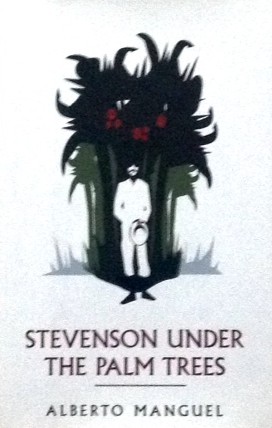Inspiring Older Readers
 posted on 19 Apr 2016
posted on 19 Apr 2016
Stevenson Under The Palm Trees by Alberto Manguel
This extended short story / novella takes creative liberties with the real story of Robert Louis Stevenson's last days in Samoa in order to produce a new perspective on the idea of the duality of man's nature. There are echoes in here of his tale of Dr Jekyll and Mr Hyde which Stevenson had finished some ten years before his move to Samoa and Manguel uses elements of this story to weave what is essentially a psychological murder mystery. Fiction and reality are quite difficult to differentiate within this brief tale given that there is quite a lot of circumstantial detail which is culled from Stevenson's own letters.
The story opens with Stevenson's meeting with a fellow Scot and Calvanist evangelical missionary, Baker - a real life character renowned for his brutality and general unpleasantness. Baker has no time for Stevenson's craft as a writer and his fanatical belief in the ungodliness of the islanders is positively unnerving. Baker has arrived from Tonga with one aim in mind - to either convert islanders to his demanding and puritanical brand of religion or to punish them. Baker's attitude disturbs Stevenson who holds a position of trust and respect on Samoa even though his health is clearly spiralling downwards - terrible coughing fits wrack his body and his handkerchief is increasingly spotted with the crimson bloom of blood.
During a festival Stevenson is abstractly enchanted by a beautiful but very young native girl who is later brutally sexually assaulted and murdered. Circumstantial evidence seems to point to Stevenson but his innocence or guilt cannot be established and when there is also a bar fire that seems to implicate him in that tragedy as well, it's clear that something odd and even hallucinatory is going on.
What is the relationship between Stevenson and Baker and just what is Baker's role in these crimes?
Manguel packs plenty of punch in a very short story and the sweaty, atmospheric and febrile world of the expatriate is skilfully constructed. The mixture of fiction and reality works very well and the story feels like a suitable minor memorial to the memory of the great writer.
The book itself is a rather beautiful production which is illustrated with woodcuts which were actually produced by Stevenson himself while convalescing in Switzerland in 1881. They were made for another very scarce publication which he called Moral Emblems and there are very few in circulation - so it's doubly nice to have them reproduced here.
Terry Potter
April 2016